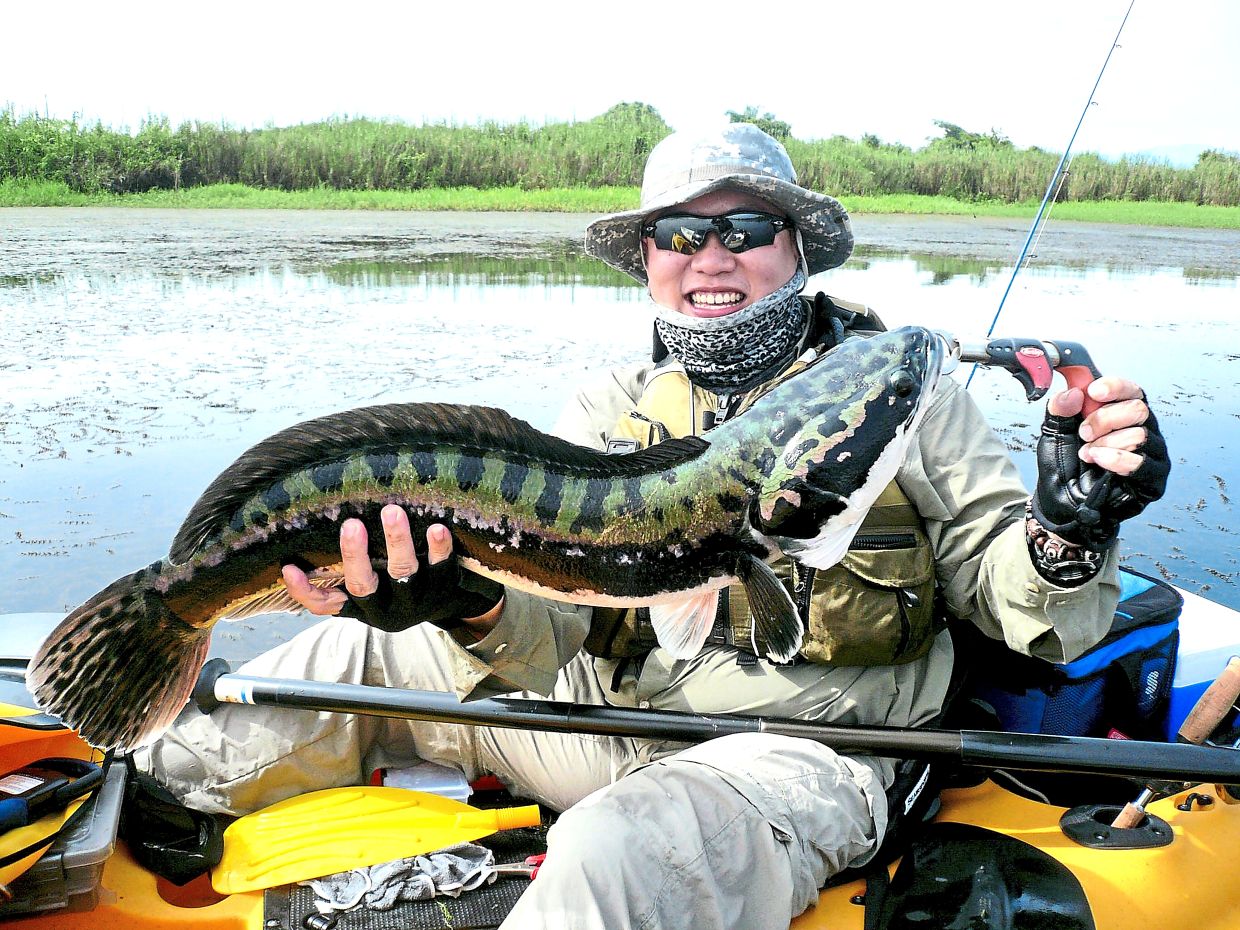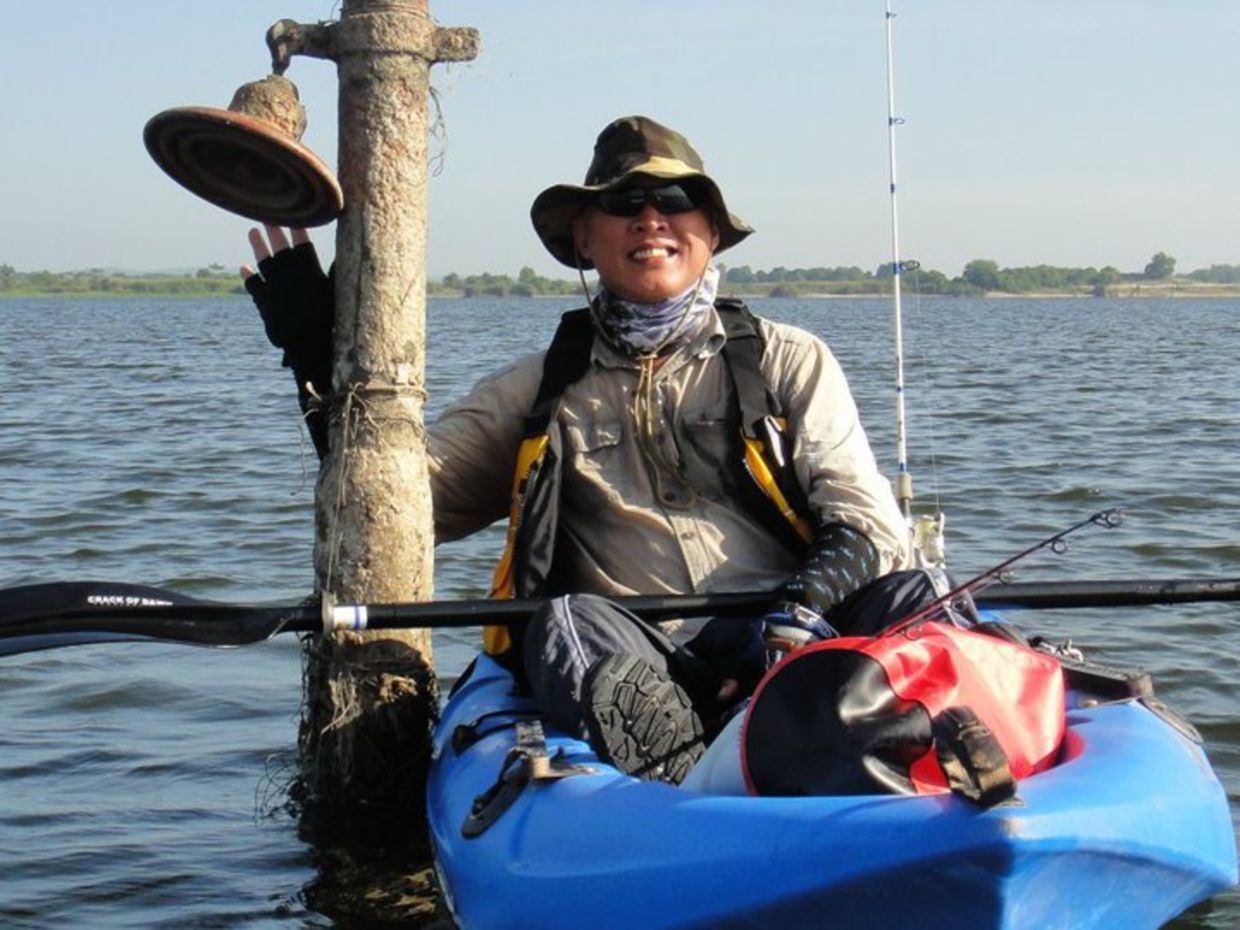The plains in Air Kuning’s wetlands with the year-end flooding.
Floods are devastating for urban places, but in the wilderness, they are a form of renewal.
Rivers bursting their banks pour nutrients onto the surrounding soil.
Fish get to feed on submerged overgrowth, bugs and worms that they otherwise would not have access to.
Across over 2,000ha of an uninhabited plain in Perak, you can experience this type of flooding now, during the rainy season.
Mention “Air Kuning” to freshwater anglers in their 40s to 60s, and you will elicit smiles because this place was their playground from the 1980s to the early 2000s.
Anglers, back in the day, could fight specimen-size fish till their arms ached in Air Kuning.
There were plenty of giant toman weighing many kilos, peacock bass over 50cm long, huge haruan and many more species, including the jelawat, patin, clown featherback and even bighead carp.
They are still there, but fewer now due to fishing pressure.
Not counting small ponds, this area has five large ex-mining lakes.
Using Google Earth Pro’s land measurement tools, their water surface totals over 550ha, equal to 391 FIFA World Cup football fields.
In the largest ex-mining lake (140ha), there is a sunken mining station with its lamp posts sticking out in the middle of the lake.
There was even an antique ceramic street lamp without a bulb on one of them, but someone took it away in 2011.
Sungai Kinta flows alongside this wetland and the lakes beside the river are purposely connected to it so that the river flows into here, presumably as a drainage effort to reduce the river’s water volume and cut the flood risk in Teluk Intan, downriver to the southwest.
As such, during the rainy season, like now, this uninhabited wetland becomes flooded until all the ex-mining lakes are connected.
Since the area is vast, there are no raging flood torrents; the lakes simply rise by maybe 2m and spread placidly overland.
Kayakers find an almost dreamlike beauty paddling across the flooded plains.
The water is clear. You can see the weeds and bushes below and thousands of small fish, usually kissing gourami and juvenile jelawat.
For those into wildlife photography, this is waterfowl heaven because this wetland is a natural stopover for migratory birds.
Indeed, on March 13, 2010, this place was gazetted by the Perak state government as a bird sanctuary, although before the gazette, oil palm trees were planted here.
One particular bird both delights and frustrates me.
It is a small, scrawny, long-necked, blackish, duck-like waterfowl, and it dives.
They swim in pairs on the lake around dense underwater vegetation.
You can see them dive down and spend around 20 seconds below, surfacing again at another nearby spot.
I have never been able to take a photo of them because I do not use telephoto lenses.
Paddle too closely, and they take off like amphibious air planes, flapping frantically while running over the water surface to get airborne.
Ornithologist Dr Gino Ooi in Penang, on listening to their description, is fairly certain that they are not native and suspects they could be coots on their migratory route.
But until someone armed with telephoto lenses goes to Air Kuning, we cannot know for sure.
In the past, just driving into the Air Kuning wetlands was a mildly serious 4x4 adventure, and even a pickup truck can get stuck and need a tractor to pull it out of a deep hole.
Nine years ago, the government built a new road cutting right through it.
Point your navigation app to “Santuari Burung Kampung Gajah” and turn on your satellite view mode.
On arrival, you will find picturesque lakes on both sides of the road, plus a dirt trail opposite the yellow signboard declaring the place a bird sanctuary.
To go deeper, it is safer to drive a sports utility or four-wheel-drive vehicle. Expect to get many scratches on your car because you must drive through brushes and tough oil palm fronds.
To reach the largest lake in this wetland, rely on your car’s speedometer and your phone’s GPS tracker. From the tarred road, go 460m north on the dirt trail. Then east, 380m, and north again, 240m. (Numbers are rounded.)
Carry on west, 150m, and then follow the sandy white trail north-northeast, 630m. Finally, head easterly at 135m.
If you did not screw up the above, you will win the high-angled view of a sprawling rectangular lake – a naturalised, colonial-day tin-mining lake with lamp posts in the middle.
If you are coming from afar, there are in nearby Bandar Baru Kampar many chic hotels, affording you the chance to rest and eat well while exploring Air Kuning for a few days.
But government agencies in charge of conservation ought to take heed of the fact that various floating vegetation, such as invasive water hyacinths, water mimosa and elephant grass, is choking the bodies of water.
Left to spread, they can rob oxygen and sunlight and cover the lakes until they become unsuitable for migratory birds and other wildlife.
Such an almost limitless “green manure” can be harvested using excavators that float to turn into biomass for compost or energy generation, effectively adding economic value to wildlife conservation.












